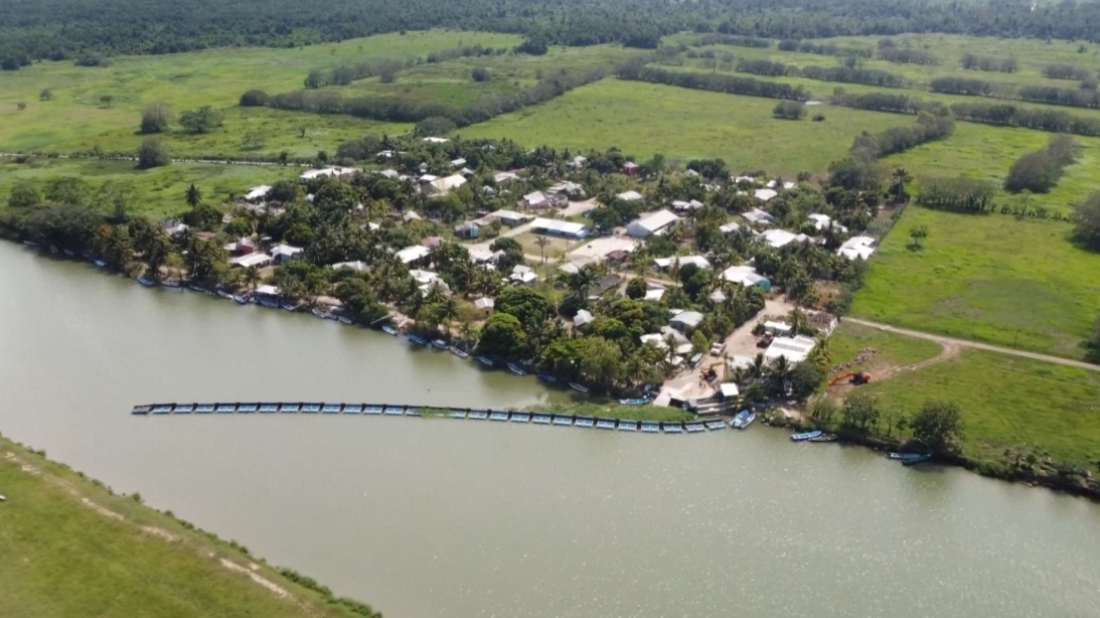AnewZ Investigations launch with documentary examining Ruben Vardanyan
AnewZ has premiered The Oligarch’s Design, a long-form investigative documentary marking the launch of AnewZ Investigations, the channel’s new edi...

The NGO Ocean Cleanup, in collaboration with the Guatemalan government and local communities, has installed the largest trash barrier to date on the Motagua River. This major effort aims to capture and remove vast amounts of garbage before it reaches the sea.
In a significant step toward environmental recovery, the NGO Ocean Cleanup, working alongside the Guatemalan government and local communities, has installed a robust trash barrier interceptor on the Motagua River, located in eastern Guatemala. The Motagua River, which divides Guatemala and Honduras, has long suffered from pollution caused by solid waste, threatening local ecosystems and coastal waters.
Installed in the town of El Quetzalito at the river’s mouth, the new trash barrier — known as Interceptor 021 — stretches 158 meters in length with a draft of approximately one meter, making it the largest interceptor deployed by the NGO to date. The system is designed to capture floating trash carried by the river, preventing it from entering the sea.
Once collected, the trash is removed from the river by a combination of heavy machinery and volunteer efforts. It is then transported for sorting and proper waste management, reducing the environmental impact on the surrounding ecosystems.
This project builds on a previous successful installation in 2023 on the Las Vacas River, a tributary connecting Guatemala City to the Motagua River. That barrier has already prevented over 10 million kilograms of trash from flowing into the Gulf of Honduras, according to Ocean Cleanup’s reports.
Volunteers working along the Motagua River have noticed significant improvements. Cesar Dubon, a local volunteer, described the change: “Before, you couldn’t even walk on the beach because of the garbage; sometimes you would sink up to your waist while walking. Now, you can even run and have a soccer match.”
Ingrid Morales, a representative from Guatemala’s Environment Ministry, emphasized the importance of the combined efforts by Ocean Cleanup and local communities. “Our work, alongside the communities along the river and the trash barriers, brings hope for restoring the affected environments,” she said.
The installation of this trash barrier interceptor represents a major step forward in addressing pollution in Central America, offering a practical solution to reduce riverine waste and protect marine and coastal ecosystems for future generations.
Ukraine has welcomed the European Union’s decision to provide €90 billion in support over the next two years, calling it a vital lifeline even as the bloc failed to reach agreement on using frozen Russian assets to finance the aid.
European Union foreign policy chief Kaja Kallas has warned that attempts to reach a peace agreement in Ukraine are being undermined by Russia’s continued refusal to engage meaningfully in negotiations.
Petroleum products are being transported by rail from Azerbaijan to Armenia for the first time in decades. The move is hailed as a tangible breakthrough in efforts to normalise relations between the long-time rivals.
U.S. President Donald Trump delivered a wide-ranging address from the White House in which he sought to highlight what he described as his administration’s achievements while laying the groundwork for his plans for the year ahead and beyond, on Wednesday (18 December).
A rare pair of bright-green Nike “Grinch” sneakers worn and signed by the late NBA legend Kobe Bryant have gone on public display in Beverly Hills, ahead of an auction that could set a new record for sports memorabilia.
Dense smog has forced authorities in Pakistan’s Punjab province to shut several major motorways on Tuesday (16 December), stranding commuters as visibility dropped sharply and Lahore’s air quality reached hazardous levels.
At least 37 people have been killed in flash floods triggered by torrential rain in Morocco's Atlantic coastal province of Safi, Moroccan authorities said on Monday (15 December).
Climatologists say Poland has logged its warmest December in 74 years, with 2025 continuing a run of above-average temperatures and repeated national records.
As the world marks the tenth anniversary of the Paris Agreement, progress in combating global climate change is mixed.
An extratropical cyclone has caused widespread disruption across Brazil’s São Paulo state, with powerful winds toppling trees and power lines, blocking streets and leaving large parts of the region without electricity.
You can download the AnewZ application from Play Store and the App Store.

What is your opinion on this topic?
Leave the first comment